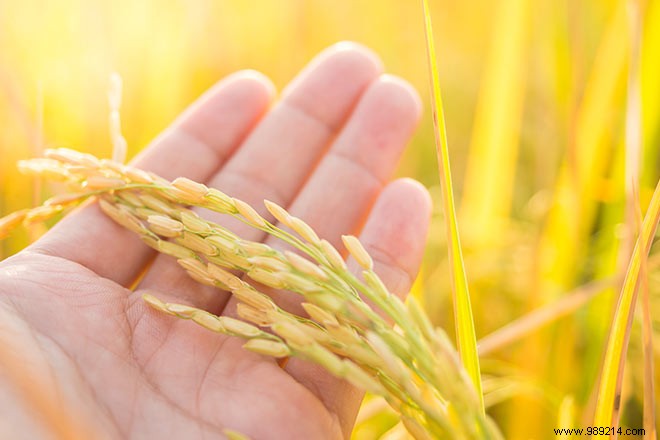The Philippines on Friday became the first country in the world to approve the commercial production of "golden rice". Developed by the Department of Agriculture of the Philippines, in partnership with the International Rice Research Institute, this genetically modified cereal will aim to combat the problems of child malnutrition.
For many, rejection of GMOs is instinctive. And for good reason, genetic engineering – which makes it possible to modify parts of the genetic material of an organism or to insert new DNA sequences into it – does not go in the direction of nature.
Our distrust of GMOs could also stem from how they were introduced in the first place. We owe this first foot in the stirrup to agribusiness giant Monsanto, which introduced its first GMO crop in the mid-1990s – a herbicide-resistant soybean. By adding a certain bacterial gene, the company hoped to create crops resistant to glyphosate, the active ingredient in its RoundUp herbicide. Farmers could thus water the weeds generously without killing the soybean plant itself, which was impossible with traditional products.
Business-wise, it was a success. From the beginning of the 2000s, Monsanto became the largest producer of genetically modified seeds (more than 90% of crops). On the other hand, this control of the company on these crops also frustrated the farmers, who then had to sign restrictive contracts to use the patented seeds. Many environmental groups have also begun to sound the alarm, linking the growing use of RoundUp with the steep decline in agricultural diversity.
Finally, the first GMOs, which largely focused on resistance to pests and herbicides, got bad publicity. And once public sentiment has been established, it is difficult to change it.

Yet genetic engineering could also directly benefit the consumer. The cultivation of golden rice, thought up in 1982 by German and Swiss researchers, is an example of this. Manipulated, this cereal indeed contains additional levels of beta-carotene, which the body then converts into vitamin A.
The point of introducing golden rice is therefore to combat vitamin A deficiency, which hinders the proper functioning of the immune system and vision. Vitamin A deficiency can lead to blindness and even premature death. It is estimated that 190 million children worldwide are affected, mainly in Africa and Asia.
Cereal, as we just said, is not new. However, despite all its good intentions, its development has long been hampered by protests from anti-GMO activists in the United States and Europe, which in turn have alarmed governments and populations in developing countries.
"Probably the greatest anger I've ever felt was when anti-GMO groups destroyed fields of golden rice growing in the Philippines “, explains to Times Mark Lynas, a writer and environmental activist. “Seeing a culture that had such obvious life-saving potential ruined – it was like seeing anti-vax groups invade a lab and destroy a million vials of Covid vaccine “.
More recently, the situation has gradually changed, especially in the Philippines. The local Department of Agriculture, in partnership with the International Rice Research Institute, have indeed developed a variety of golden rice that promises extra levels of beta-carotene. A few days ago, the country even became the first in the world to approve the commercial production of this cereal.
"This is a really important milestone for our project because it means we have passed this regulatory phase and golden rice will be declared as safe as regular rice “, Russell Reinke of the International Rice Research Institute told AFP. “The next step is to take a few pounds of seeds and multiply them, so they can be widely available “.
Despite these promises, some are still puzzled. In a recent blog post, American researchers Dominic Glover and Glenn Stone notably stated that the claim that golden rice cures vitamin A deficiency has yet to be proven. The latter also argue that families affected by these deficiencies in this country often lack land to grow rice for themselves.